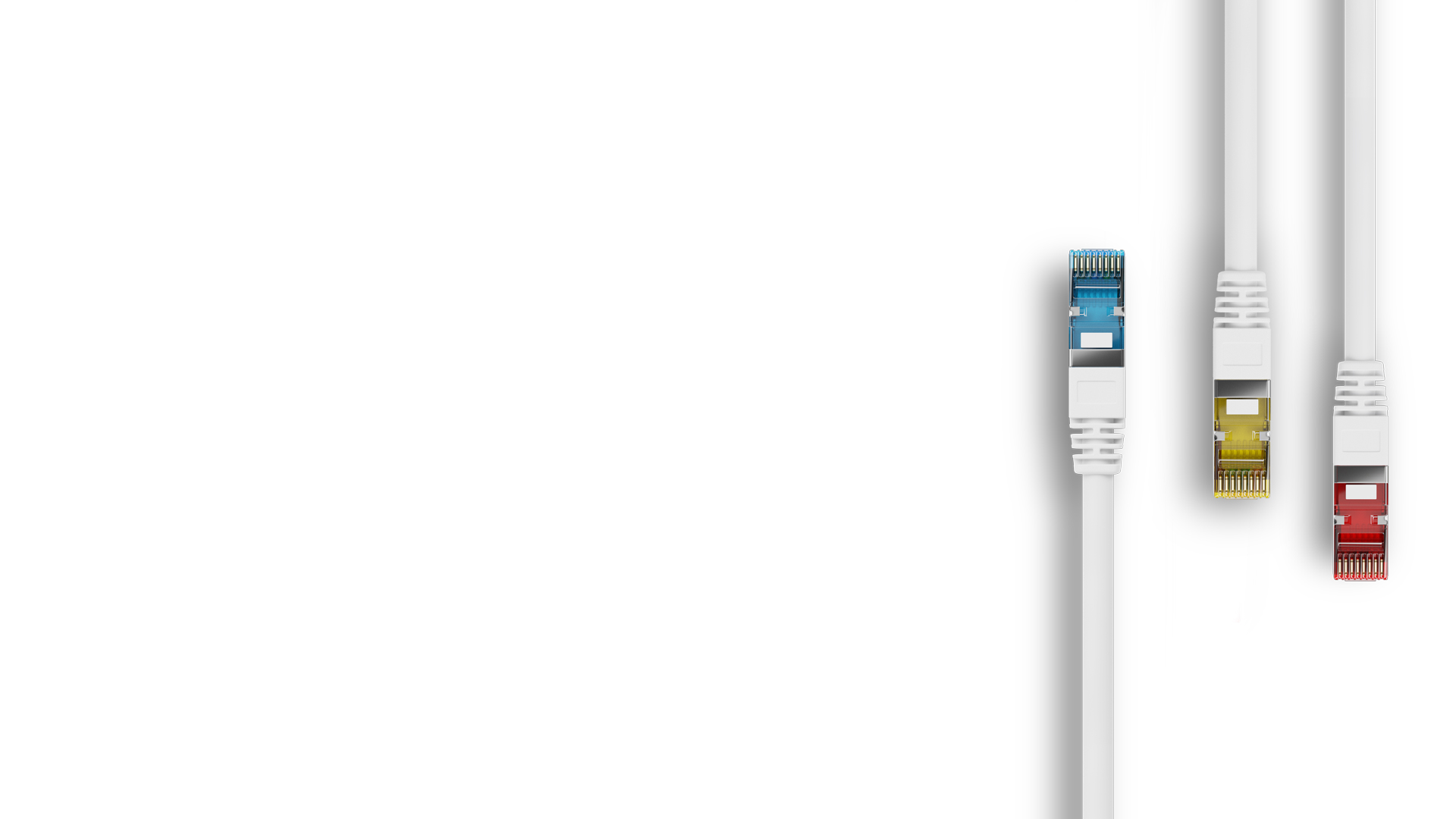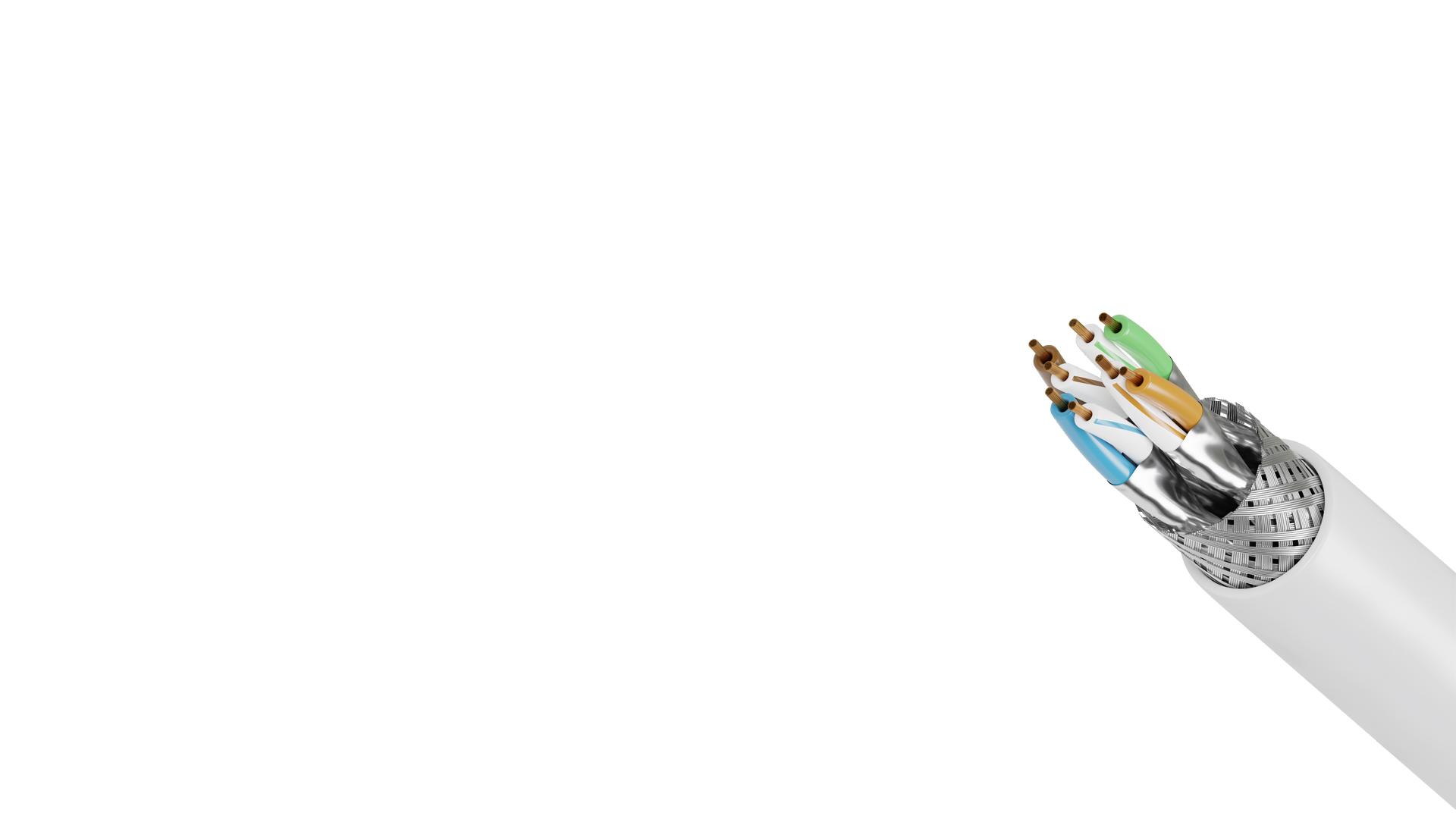
PATCH CABLES
CONNECT TO THE FUTURE
THE IMPORTANCE
OF RELIABLE CONNECTIVITY
Patch cables deserve special attention as they represent the lifelines of modern communication infrastructure. Their reliability therefore stands or falls by the function and supply of entire company locations and the future digitalisation of company processes; because efficient cabling is the physical basis for high-speed applications in the office and building cabling sector.
Patch cables are business critical to many company operations and can easily be integrated with new and emerging technologies, however a single unreliable patch cable can jeopardize all communication between servers with mission-critical data and functions, resulting in huge losses. These losses can be easily avoided by selecting high quality and high-performance patch cables.
Learn more about the need for high quality & reliable connectivity technology >

OVERVIEW
NETWORK CABLE CATEGORIES
The following categories are market relevant for modern installations from ambitious prosumer networks to high-speed backbone applications.

Standard
for Prosumer
View Range
Professional
Applications
View range
Higher Data
Rates
View Range
Top of
the line
View RangeCAT.5 – STANDARD FOR PROSUMER
Still found in many network installations, Cat.5 cables have been providing reliable service for decades. For prosumer use in networked homes and in SoHO office installations, these cost effective and reliable cables are ideal.
CAT.6 –
Professional Applications
The all-rounder in network cables for the high demands of professional environments. These cables are suitable for medium to large network installations with high network load, including applications such as streaming and digital signage. They are the standard for network infrastructure used by almost all public institutions.
Cat.7 – Higher Data Rates
Cat.7 and its subcategory Cat.7A have been defined in order to be prepared for future transmission standards with even higher bandwidth requirements. These cables are a reliable standard in large 10GBase-T networks with high-data loads and bandwidth-hungry multimedia applications.
Cat.8 – Top of the line
The latest and future network transmission standards such as 25GBase-T, 40GBase-T or even 100GbE (100Gigabit Ethernet) requires a further increase in the maximum possible operating frequencies. This was taken into account with the definition of Cat.8 with the two variants Cat.8.1 and Cat.8.2. So far Category 8 cables have mainly been used in fast infrastructure data centres.

KNOW YOUR CAT.S
CABLE CATEGORIES
In order to make their features easier to use, network cables have been divided into categories with minimum requirements that must be met for different applications.
PERFORMANCE CHARACTERISTICS
OF PATCH CABLES
Conductor material, cable construction, shielding and insulation or cable sheathing materials are decisive factors for the signal quality and thus the performance of patch cables in their respective areas of application.

CABLE CONSTRUCTION
NETWORK CABLES & THEIR SHIELDING TYPES
The cable structure of a network cable and the materials used are the determining factors for its performance characteristics.
CERTIFICATES
LINDY PATCH CABLE RANGES
Global standardisation institutions define the requirements, parameters and standards to be met by network cables.

let’s talk!
Our sales team are on hand to discuss your patch cable requirements.
Click on the button below & enter your details.
We’ll call you as soon as possible.























